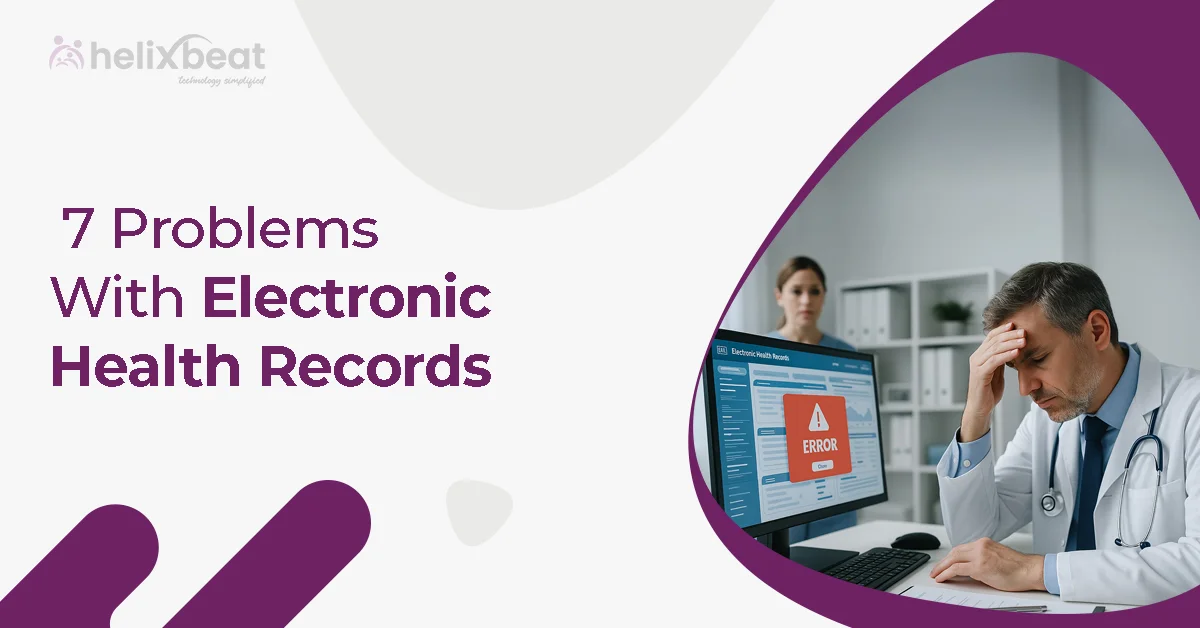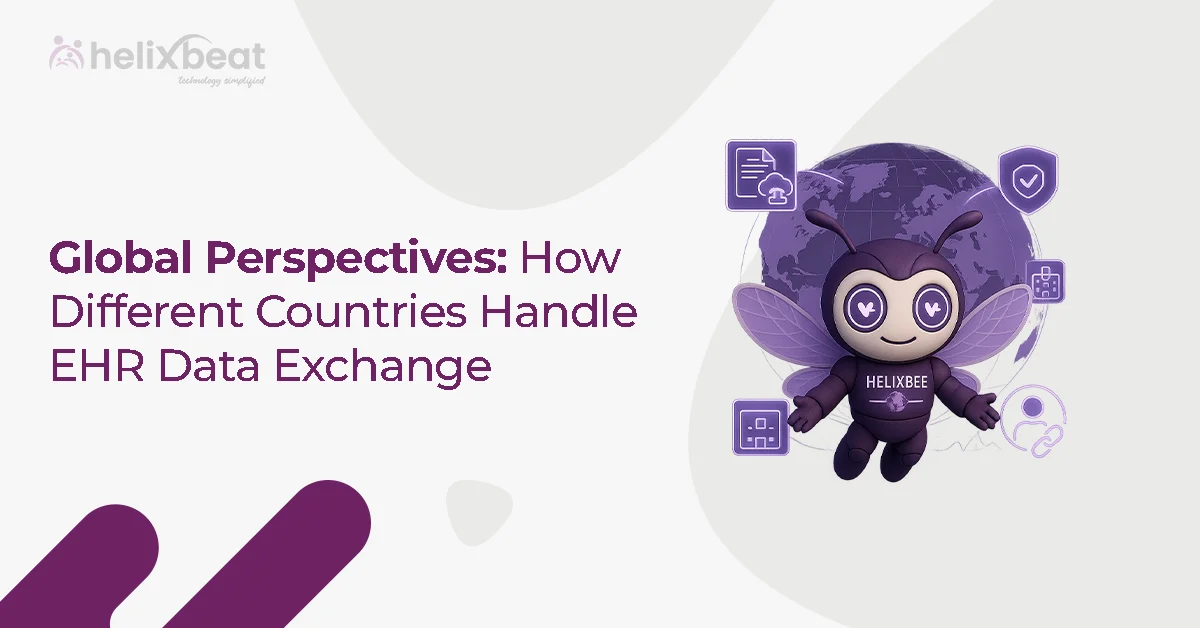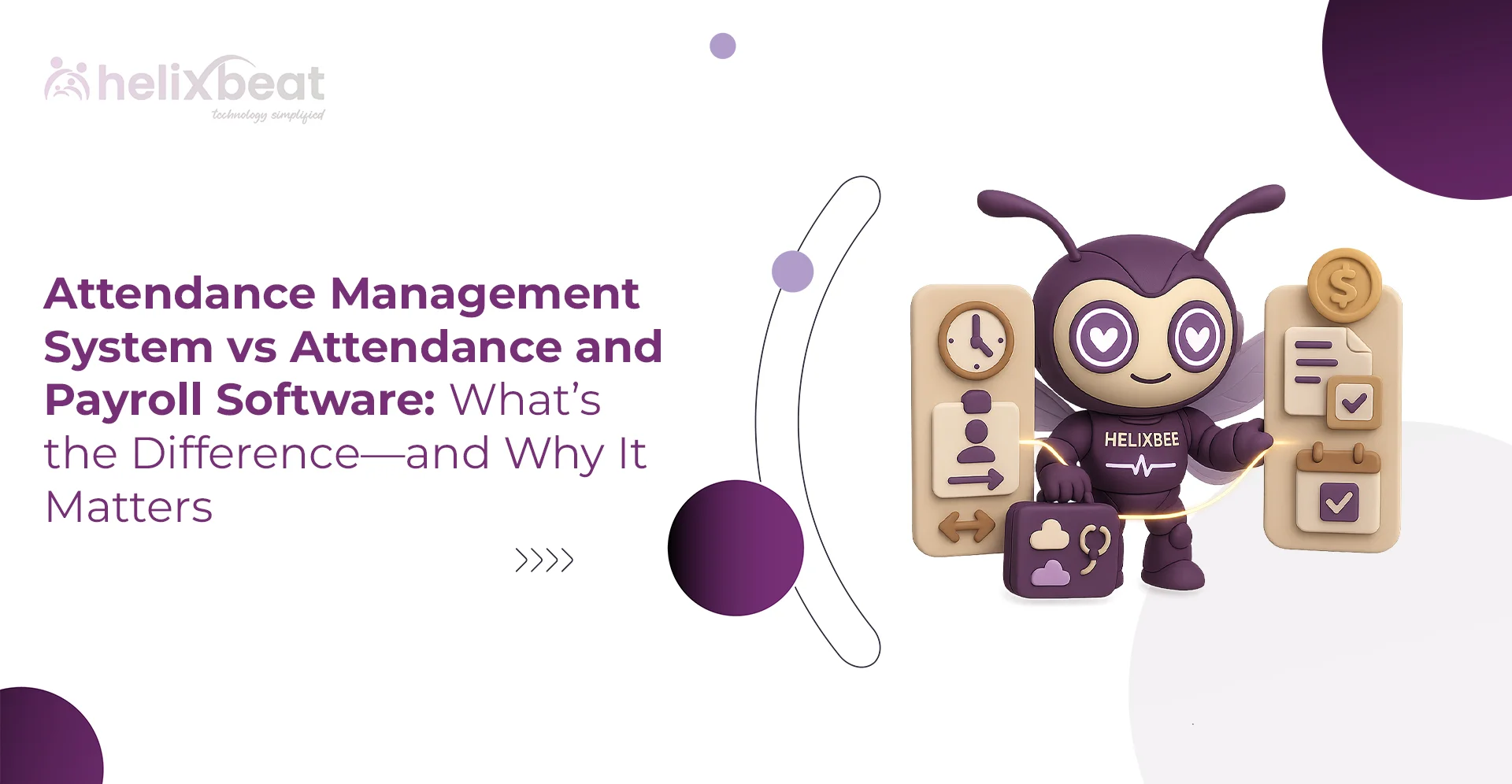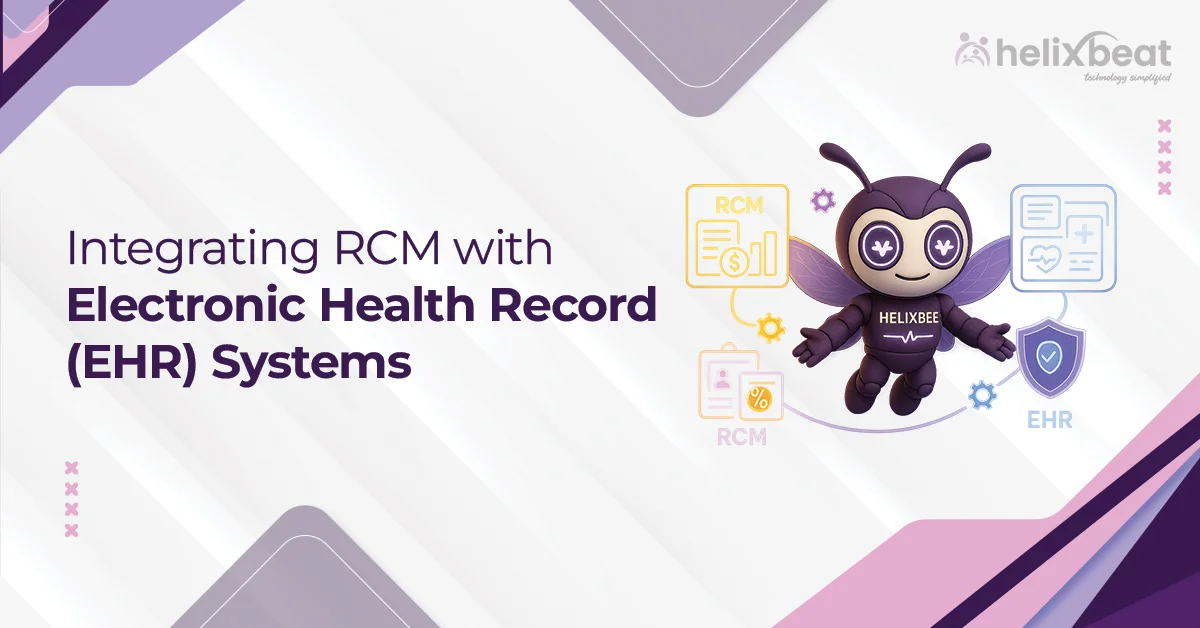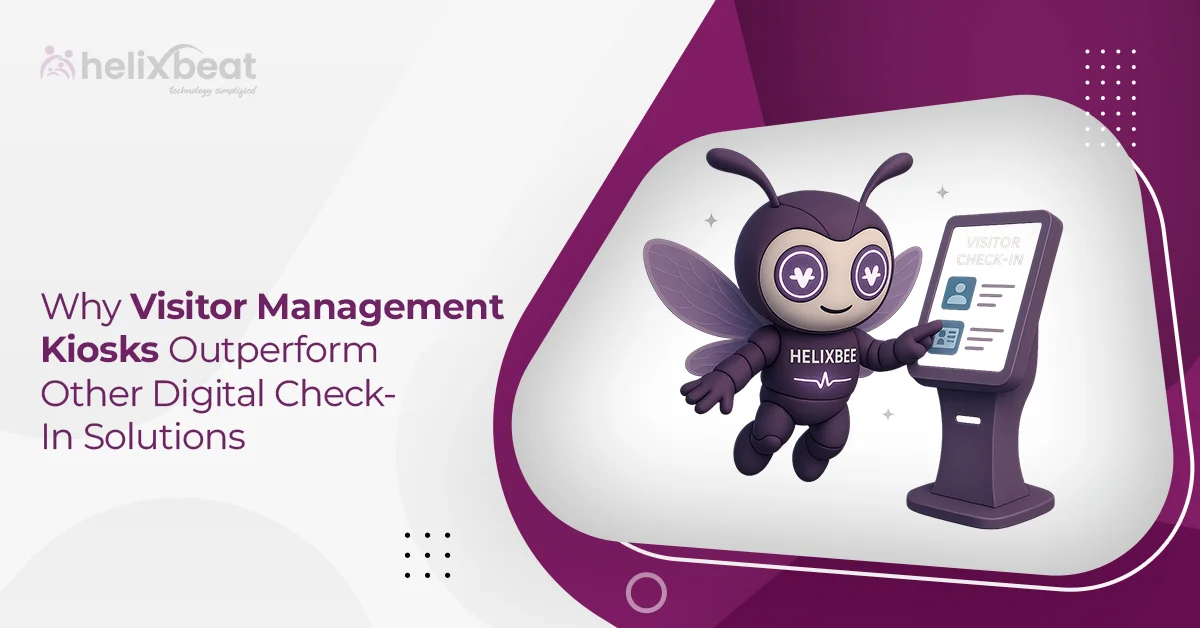Have you ever considered how healthcare professionals manage vast amounts of patient information? The answer is Electronic Health Records (EHRs), a digital solution that has transformed how patient data is stored and accessed. EHRs allow for quick retrieval of essential information, improving care quality and reducing medical errors.
Although, EHRs have many benefits that come with their own set of challenges. From data security issues to technical difficulties and user adoption barriers. As we continue to rely more on EHRs, it’s crucial to tackle these problems head-on to ensure that they truly enhance patient care.
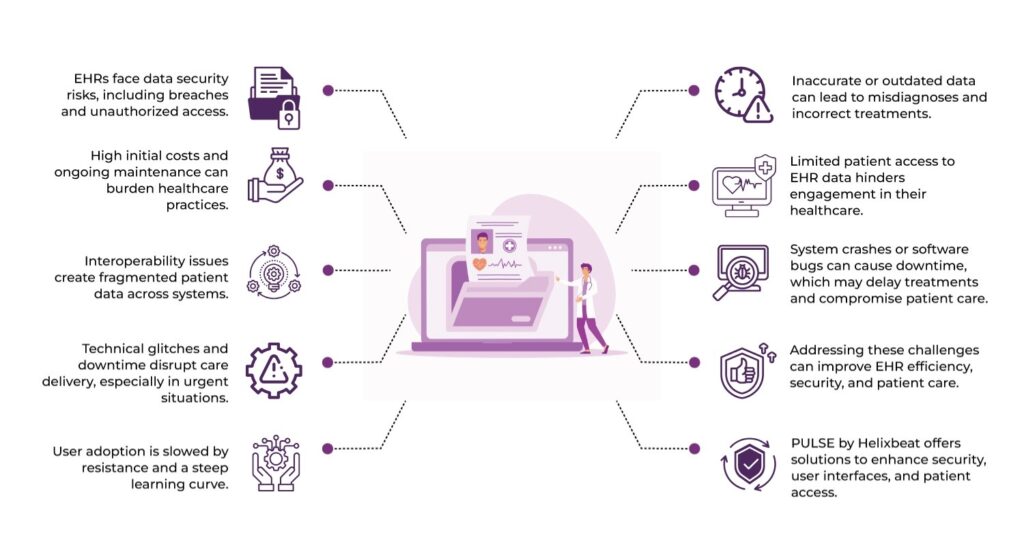
Table of Contents
Data Security and Privacy Concerns
The 2015 data breach of Anthem Inc., one of the largest health insurers in the U.S., exposed the personal data of nearly 80 million individuals, highlighting the severe risks associated with data security in healthcare.
The compromised information included names, birth dates, Social Security numbers, and income data, although no medical information was reported as accessed.
Vulnerability to Security Threats
- Patient data stored in Electronic Health Records (EHRs) is susceptible to various security risks, including breaches, hacking, and unauthorized access.
- The sensitive nature of healthcare data makes it a prime target for cybercriminals, putting both patient privacy and healthcare systems at risk.
- With the increase in data sharing and access across platforms, the potential for security breaches has risen significantly.
Compliance with Regulations like HIPAA
- One of the primary concerns with EHRs is maintaining compliance with regulations such as HIPAA (Health Insurance Portability and Accountability Act).
- Healthcare organizations must adhere to these strict guidelines to protect patient data and avoid hefty fines or reputational damage.
- Failure to comply can result in unauthorized access to patient data, compromising the confidentiality of highly sensitive health information.
PULSE by Helixbeat: A Complete Solution
- Real-Time Data Encryption: PULSE by Helixbeat ensures that patient data is encrypted both at rest and in transit, protecting it from unauthorized access.
- HIPAA Compliance: PULSE is fully compliant with HIPAA standards, ensuring that all patient data is securely handled and that healthcare organizations avoid costly violations.
- Multi-Factor Authentication: PULSE integrates multi-factor authentication, providing an added layer of security and ensuring only authorized individuals can access sensitive data.
- Regular Security Audits and System Updates: PULSE undergoes continuous system updates and security audits, identifying vulnerabilities and addressing them before they can be exploited.
- By implementing PULSE, healthcare organizations can strengthen their data security framework, protect patient privacy, and maintain compliance with regulatory requirements, creating a secure environment for both providers and patients.
High Costs of Implementation and Maintenance
Initial Costs of EHR Systems
- Purchasing an Electronic Health Record (EHR) system requires a significant initial investment, including software licenses, hardware, and installation costs.
- Healthcare organizations must also invest in training staff to use the new system, which can take time and resources.
- Small to medium-sized practices may find the upfront costs a financial burden, potentially making them hesitant to adopt EHRS.
Ongoing Costs
- EHR systems require continuous updates and maintenance, which can add up over time.
- Regular troubleshooting and technical support are essential to ensure the system operates smoothly, adding further costs.
- As regulations change, healthcare providers may need to update to stay compliant, leading to additional financial outlay.
Possible Solutions
- Cloud-Based Solutions: Cloud-based EHR systems provide a more affordable option, with lower upfront costs and a subscription-based model, making it easier for small practices to manage their budgets.
Interoperability Challenges
When data can’t be easily shared between providers, it can lead to delays in diagnosis, incorrect treatments, or incomplete medical histories, ultimately affecting patient care.
Incompatibility Between EHR Systems
- Many EHR systems are incompatible with each other, leading to fragmented patient data across different healthcare providers and systems.
- This lack of interoperability makes it difficult to transfer patient data between different systems, hindering the continuity of care.
Solutions and How PULSE by Helixbeat Can Help
- Standardizing EHR systems with interoperable protocols can help address these challenges. The adoption of systems like FHIR (Fast Healthcare Interoperability Resources) enables seamless data sharing.
- PULSE by Helixbeat supports interoperability by offering integration with multiple healthcare systems using open standards like FHIR, ensuring that patient data is accessible across different platforms, improving the continuity of care.
Technical Glitches and Downtime
Technical Issues
- EHR systems are prone to technical glitches such as system crashes, software bugs, or performance slowdowns, which can hinder healthcare delivery.
Impact of Downtime
- Downtime during critical care moments can delay important treatments, especially in urgent situations, putting patients’ health at risk.
Solutions and How PULSE by Helixbeat Can Help
- Standardized Systems: Standardizing EHR systems with interoperable protocols can help address these challenges. The adoption of systems like FHIR (Fast Healthcare Interoperability Resources) enables seamless data sharing.
- PULSE by Helixbeat supports interoperability by offering integration with multiple healthcare systems using open standards like FHIR, ensuring that patient data is accessible across different platforms, improving the continuity of care.
User Adoption and Training Issues
Resistance to Adoption
- Many healthcare professionals, particularly older staff or those who are not tech-savvy, are resistant to adopting new EHR systems.
- This resistance can slow down the integration of EHRs and affect overall efficiency.
Learning Curve
- There is a significant learning curve associated with new EHR systems, requiring dedicated training time and resources.
Solutions
- Ongoing Training Programs: Providing continuous training and education ensures that staff are comfortable with using the EHR system.
- User-Friendly Interfaces: EHR systems should have intuitive designs that are easy for healthcare professionals to navigate.
- PULSE by Helixbeat offers user-friendly interfaces and ongoing training support, helping healthcare professionals adapt to the system quickly and efficiently, thus improving adoption rates.
Inaccurate or Incomplete Data
Human Errors and Outdated Data
- Human errors during data entry or the use of outdated information can compromise the accuracy of EHRs.
Impact on Patient Care
- Inaccurate or incomplete data can lead to misdiagnosis, incorrect treatments, or even dangerous drug interactions.
Solutions and How PULSE by Helixbeat Can Help
- Regular Updates: Regularly updating patient records ensures the accuracy and relevance of data.
- Double-Checking Information: Implementing protocols for verifying data before entry helps minimize human errors.
- PULSE by Helixbeat integrates real-time data verification and automatic updates to maintain the accuracy of patient records, reducing errors and enhancing the quality of care.
Lack of Patient Access or Engagement
Limited Access to EHR Data
- Many patients still do not have easy access to their own EHR data, limiting their ability to actively participate in their healthcare decisions.
Frustration with Complex Portals
- Some patients find it difficult to navigate complex EHR portals, leading to frustration and disengagement from their healthcare journey.
Solutions and How PULSE by Helixbeat Can Help
- Patient Portals: Providing user-friendly, transparent portals can empower patients to access and manage their health information more easily.
- Clear Communication: Ensuring that patients understand their health data can increase engagement and improve health outcomes.
- PULSE by Helixbeat offers a secure, easy-to-navigate patient portal that allows patients to access their EHR data, track their health status, and communicate directly with their healthcare providers.
(CTA: Learn more about how PULSE by Helixbeat can solve these challenges!)
To Sum It Up
This blog examines seven major issues related to Electronic Health Records (EHRs) that affect both healthcare providers and patients. Although EHRs bring significant advantages, it is evident that these problems need to be resolved for the systems to fully realize their potential.
By tackling these challenges using effective tools and systems like PULSE by Helixbeat, healthcare organizations can improve the efficiency, precision, and security of their EHR systems. PULSE provides solutions to enhance patient access, facilitate user adoption, and ensure that healthcare providers are equipped to deliver high-quality care.
Ready to upgrade your EHR system? PULSE by Helixbeat provides a comprehensive solution for all your data management needs. Request a demo and see how we can help you today!
FAQs
What is the most serious problem with electronic health records?
The most serious problem with EHRs is data security and privacy risks. As patient information becomes more digitized, it becomes a target for cyberattacks and unauthorized access, potentially compromising sensitive health data.
What are the challenges of electronic health records?
Challenges of EHRs include:
- Data security and privacy concerns
- High costs for implementation and maintenance
- Lack of standardization between different EHR systems
What are EHR challenges for nurses?
Challenges of EHRs for nurses include:
- Time-consuming data entry
- Resistance to using new systems
- System glitches or downtimes that affect workflow
- Difficulty navigating complex interfaces
- Inaccurate or incomplete data entry affecting patient care
What are the benefits of electronic health records?
The benefits of EHRs include:
- Improved patient care coordination
- Better access to real-time patient data
- Reduced medical errors
- Increased efficiency in healthcare delivery



